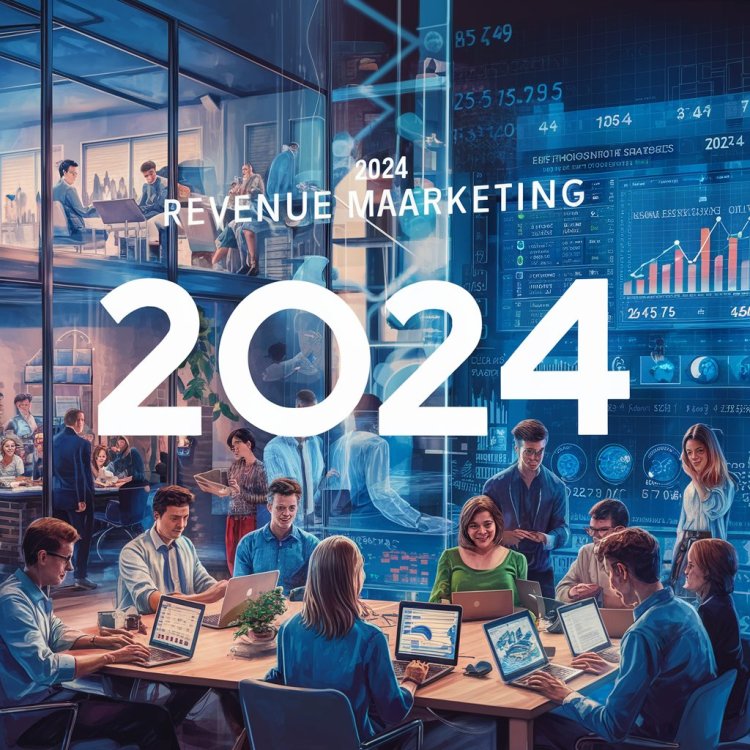Revenue Marketing: Definition, Strategies, and Importance In 2024
Share this Post to earn Money ( Upto ₹100 per 1000 Views )

Everybody knows the secret to how brands sustain their businesses, and that secret is simply none other than one singular thing, which is “Revenue.” Yes! All those brand marketing and digital growth tactics aim to hit one target: generating revenue, and that’s it.
However, due to fierce competition and market saturation, digital marketing strategies were proving insufficient for brands looking to generate bottom-funnel results. To close the deals and earn the final conversions, revenue marketing is the new disruptive strategy that manages to create end results for the brands.
Create an Effective Revenue Marketing Model
Strategizing on how to tap into creating more revenue for your brand. Develop some strategies on how to generate more revenue. Some of them are:
-
Align the Goals of Sales and Marketing Teams
The first step in strategizing your revenue marketing plan is to define the roles of marketing and sales department teams. Because there will be a lot of communication and planning back and forth between sales and marketing teams, clearly defining both team's goals will lead to better results in the future without any confusion or false claims.
The marketing department needs to know that its role is to generate qualified leads and focus on generating leads that are not generic and have a high tendency to convert. On the other hand, the sales department must ensure they collaborate with marketing professionals and listen to their guidelines clearly when closing deals.
-
Audit Website and Current ROI
To create their marketing collateral, businesses must first examine how their website performs on the internet marketplace. They should see how users are interacting with their site in terms of engagement and audit how their website is working in terms of generating leads, micro-conversions, and macro-conversions.
Brands can analyze their marketing Return on Investment (ROI) by using different analytic tools that give them in-depth insights into how their marketing model is working. These tools can even provide customizable options, which helps them take tabs on finding different success metrics of their marketing strategies. Pay-per-revenue marketing, gated content conversions, and social media performance can help them perceive their overall marketing growth.
-
Correlate Resources to Create Impactful campaigns
From top-funnel engagement to bottom-funnel results, revenue marketing ensures that their digital marketing strategies follow a cohesive marketing approach. This ends with a singular purpose: bringing leads to sales teams and their sales professionals doing the final work to convert leads into paying customers.
Between managing SEO, content, advertising, and conversion copywriting, every appointed resource needs to be aligned to create marketing collateral that manages to generate specialized results.
-
Take Tabs on Your Customer Journey
To ensure their marketing revenue model performs best, they must first create strategies and plans that closely examine the customer's whole buying journey with the brand. For existing customers, businesses need to map out their entire journey from becoming a lead to a loyal customer. Another is to see those customers who leave after some time or quit the buying journey before taking action.
This helps them find all the touchpoints and friction points from the customer's point of view, which will help them improve their sales funnel and provide a better customer experience.
3 Essential Components of Revenue Marketing
-
Capturing Customer Data
Data is the most crucial element in revenue marketing. Marketers create strategies and campaigns based on customer data. This helps make personalized digital advertising campaigns like SEO PPC services and complements their lead generation efforts like email marketing services. Bottom-funnel results are not moved by demographic or geographic information. They move the needle by analyzing customer behaviors, purchase histories, and online activities, showing their brand interactions.
-
Lead Management
Lead management is one of the central concepts in Facebook lead ads. Many search engine marketing strategies struggle to create impact. Lead ads work on nurturing their leads through the sales funnel and ensuring they have the highest tendency to convert in the sales stages. Marketers create lists of segment leads and rate them based on their odds of conversions.
-
Utilizing Technological Stacks
Revenue marketers have various martech stacks under their portfolio. They work on creating bottom-funnel results, which require advanced software and tools that provide actionable insights and, most of the time, ease their tasks with automation systems.
Some of the tools are Customer Relation Management (CRM), automation tools, data analytics, and many other channel-related platforms.
Wrapping Up
Revenue marketing will thrive in the digital space because it has the right and most direly needed expertise to generate sufficient revenue for businesses. Revenue marketers work as a bridge between marketing and sales teams and bring promising growth to brands that need to expand their revenue models.

 SarmadAli
SarmadAli 



![Elite Male Enhancement Gummies (USA) Official Website, Reviews [2024] & Price For Sale In United State](https://blog.rackons.in/uploads/images/202407/image_380x226_66a7956b0cdcc.jpg)
